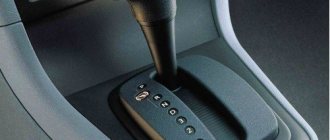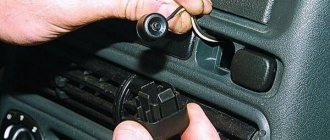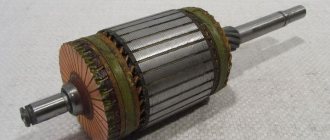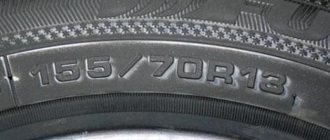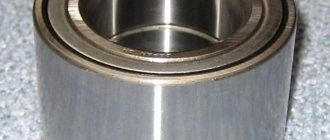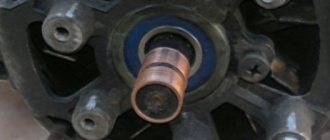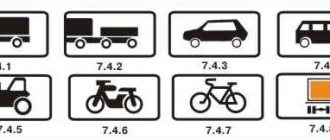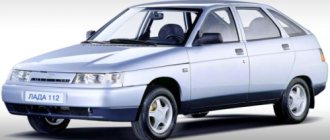Training at a driving school is enough to put a new driver on the roads. At the same time, during the training course, the future motorist will learn practically nothing directly about driving a car, learning the rules and performing exercises on the training ground. Finding yourself on real roads and purchasing your first car, the driver may be faced with the problem of the absence or presence of an anti-lock brake system. It is important to be able to correctly stop a car at high speed that is equipped with an ABS system or that does not have it.
Braking on snow and ice. ABS operation
Braking - what could be simpler? The basics, the basics, are the first thing they teach in a driving school. But winter proves from year to year that many drivers have problems with this basic skill. Moreover, regardless of age and experience: both young fans of Dominic Toretto and adherents of the “pensioner” driving style get into stupid accidents. Let's try to figure out what's going on here and dispel a few persistent driving myths about ABS.
A year ago, we already wrote about the basics of safe winter driving: fighting panic, caution and reading the road situation, monitoring passengers.
But braking on slippery roads causes the greatest difficulties for drivers. Because on ice, the brakes work completely differently than you are used to and expect.
One of the factors that significantly influences braking is the ABS system, which gives rise to many disputes and myths. “A car with ABS is like a cow on ice!” - all motorists have heard this phrase from their older comrades. And, in confirmation, a colorful description of the accident that this system allegedly led to. “Without ABS, I would...” Well, let’s look at this “would.”
How does the ABS system work?
The anti-lock braking system (ABS or АБС in Russian transcription) began to appear on cars in the 70s. In Europe, together with Bosch, Mercedes implemented it on its S-Class, in the USA, Chrysler equipped the flagship Imperial with the system, and in Japan, the Toyota Crown and Nissan President equipped with ABS were released almost simultaneously. By the beginning of the 2000s, most cars in the world had ABS. That is, the system is far from crude, and its effectiveness has long been tested and proven.
Why was she needed? When braking skidding - with the wheels locked - the car can turn sideways and even turn around, which is very dangerous. At the same time, the level of deceleration is quite low - the wheels turn into rubber “skis”, sliding along the asphalt.
ABS tests on Mercedes-Benz W116 (1972)
By changing the pressure in the brake system and preventing the wheels from locking, ABS makes braking more effective and predictable. The latter is even more important: a skidding car becomes uncontrollable, while ABS makes it possible to drive steadily in a straight line, staying in its lane, and even steer around obstacles while braking.
On older cars without ABS, drivers imitated its operation using intermittent braking, releasing the pedal at the moment when they felt the wheels locking. But even the most experienced driver in the world cannot compare with ABS in efficiency, because it can release the wheels separately from each other - for this a person needs four brake pedals and four feet.
Where do the opponents of ABS come from? As a rule, these are drivers with negative personal experience who have drawn the wrong conclusions from it. Imagine: you went too fast on a slippery road, pressed the brake, but there was no expected slowdown - there was only the helpless whine of ABS and the approaching rear bumper of someone's car. At such a moment, it really seems that ABS does not allow the car to brake, treacherously vibrating the pedal. But this is an illusion: the car slows down exactly as much as the road surface allows - with locked wheels it would be the same or worse.
“ABS on ice is evil,” the author of the video concludes.
There is always one reason for the inability to stop a car in time - the driver’s mistake in assessing the road situation and choosing the speed. You need to understand that ABS is not a magic wand, but only a tool that allows you to maintain control of the car when braking “to the floor” and gives the driver a chance to correct his mistake.
Braking on snow: with and without ABS
Why does everyone remember ABS in winter? Because in the summer the system rarely manifests itself - as a rule, there is enough traction so that the wheels do not lock and the ABS does not come into operation. Everything changes with the first snow.
Adherents of wheel locking (skidding) braking cite several arguments against the operation of ABS on snow. For example: by spreading the wheels, the system prevents them from raking up rollers of snow in front of them, which help to stop. Also, when braking hard without ABS, there is a chance that the snow will reach the ground, getting caught on it. Indeed, in deep and loose snow there is such a “plow” effect. But this is only relevant when racing on a snowy field. On city roads we deal with completely different conditions: slippery snow, a small amount of loose snow and an icy crust underneath. And also with dense traffic, in which it is completely unsafe to skid and skid.
Braking on snow is clearly demonstrated by Marat Salakhutdinov, an experienced rally driver and teacher of emergency training.
First the car brakes with ABS, then with the system disabled, and the third time in the old-school choppy way. Tricks don't work: ABS braking remains the most effective.
Ice braking: with and without ABS
Braking on ice gives a storm of emotions - a car can travel tens of meters, almost without slowing down. And accidents that happen under the sound of ABS make drivers righteously angry and want to pull out the ABS fuse, “optimizing” the car. Why it is the anti-lock braking system that is to blame, and not, for example, bad winter tires, unclean roads or one’s own wrong actions is a mystery.
Meanwhile, a direct comparison of braking with ABS and skidding under the same conditions gives a clear answer why automakers make this system non-disabled. On ice, the situation for a car without ABS is even more difficult than on snow: there is almost nothing to cling to (especially on friction tires), and you also cannot heat up the snow in front of you. As a result, a car with disabled ABS stops much later.
Braking on different types of surfaces
The undoubted advantage of ABS is the preservation of straight-line movement of the car even with different surfaces under the left and right wheels. A road edge that is poorly cleared of snow is a common winter situation. When there is snow or ice under the right wheels and asphalt under the left wheels, their grip on the road differs significantly. If you skid in emergency braking without ABS, the car will inevitably spin out in such a situation, and you will most likely end up in a ditch. ABS allows you to brake and move straight, without extremes.
Of course, the intensity of braking will be determined by the wheels with the worst grip - it will take you a long time to stop. Therefore, such situations should be avoided: try to brake on a uniform surface, staying away from the ice.
Why can't you turn off ABS yourself?
But let’s say we haven’t convinced you, and you really want to drive the old fashioned way: brake intermittently, and if necessary, skid. Down with the ABS fuse until spring? Do not hurry.
Artificially causing an ABS system error by pulling a fuse or opening the circuit of one of the sensors is a common way to disable it. But by doing this, you will only turn your car into a faulty one, rather than a car without ABS.
Drivers who drove older cars that did not have ABS from the factory remember a part called the “sorcerer” - the brake force distributor. This mechanical brake pressure regulator prevented the rear axle from locking before the front, preventing the car from skidding suddenly and dangerously. On modern cars there is no “sorcerer” - the distribution of braking forces is carried out by the ABS hydraulic unit. And if the system is faulty, then the distribution does not work properly. Driving with an ABS warning light is more dangerous than you think - during emergency braking, the car can unexpectedly skid or go into the oncoming lane.
Summary: on a modern car equipped with a working ABS system, you only need to brake “to the floor” in an emergency, without trying to release the pedal on the verge of the system being activated.
leave it to professional rally drivers - it has long ceased to be relevant on ordinary roads. Repair ABS if it is faulty on your car, and never think about turning it off yourself.
Features of braking with ABS
ABS is certainly not evil, and there is no harm from it, just like the worldwide conspiracy of automakers. But there are features that drivers should be aware of. Let's list them.
- It’s worth starting with tactile noise effects: during operation, the system creates sensitive impacts on the brake pedal, accompanied by a characteristic crunch or rattle from under the hood. This can frighten novice drivers - everything was quiet and calm, and then suddenly this happened. Don't worry, this is normal ABS operation.
- A more unpleasant surprise is that the system turns off at low speeds (from 0 to 5–20 km/h, depending on the car model). Having become accustomed to the fact that the wheels do not lock, when maneuvering in an icy yard, you may be quite surprised that the car suddenly began to skid.
- Be prepared for this.
- ABS is sensitive to tire size and pressure - if the difference is large, a system error may occur. For example, when installing a spare tire.
- Like any car system, ABS sometimes breaks down. Most often, the sensors or their wiring are to blame - repairs do not take much time. But sometimes more serious breakdowns occur.
- The most unpleasant problem is the ABS malfunctioning on uneven roads - on a ridge or when falling into a hole. At the moment the wheel rebounds, it is blocked, which leads to unexpected ABS activation for the driver. At the moment of such a failure, you need to completely release the brake pedal for a moment and press it again - the system will return to normal.
Engine braking
Emergency braking and activation of ABS is an unpleasant situation in itself, which is better not to lead to. To reduce the risk of ABS chattering in winter, slow down the car in advance using engine braking.
Engine braking is an effective counter-emergency technique, relevant on long descents and slippery sections of the road.
By selecting a lower gear in the transmission and thus increasing engine speed, the driver physically (by the gear ratio) limits the speed to which the car can accelerate. This dramatically reduces the risk of skidding - the car drives more stable and safer.
Engine braking is available on any transmission: mechanical, classic automatic transmission, CVT - just move the selector one or two steps lower. Even hybrids have effective engine braking, especially in forced battery charging mode. Use this technique on dangerous sections of the road.
Braking in a corner
But braking (classic, using a pedal) in a turn, especially on a slippery road, is an example of poor driving training and insufficient experience. With the brake pressed in a turn, a drift of the front axle or a skid of the rear can quickly develop, long before the wheels lock - ABS will not help here.
After every snowfall, videos appear on Youtube where you can hear screams addressed to the driver: “Release the brake!” But the brake is usually not released - psychologically it is difficult when the car is sliding on ice.
As a result, another car becomes a victim of Tinsmith Day.
The correct technique for braking on a slippery road is in advance, before turning, which requires the driver to correctly assess the required speed. The turn itself is taken under light throttle - in this case, the car behaves predictably, without trying to slide off the intended trajectory. This principle works at both low and high speeds.
Winter is the ideal time to improve your driving skills. Train, test the theory in practice and analyze the car’s response to your actions - this way you will increase your chances of an accident-free winter.
Intermittent deceleration method
With this method, the steering wheel and foot brake are activated. The pedal is pressed in sharp jerks. Because of this, the car's wheels do not have time to completely stop. It is important to understand that this method requires some driving experience.
Apply the brakes just before the wheels completely lock. This way they don’t have time to completely stall and skid. Steer should be done when the brake pedal is depressed.
Due to alternating sharp pressure and release of the brake pedal, the pads do not have time to completely stop the wheels, and the tires do not have time to slide along the road surface. This is how the speed of the car is reduced in steps.
To understand how to properly brake intermittently on a car, you should study the procedure for this method:
- Release the accelerator.
- Press the brake pedal sharply.
- Hold in the pressed position for a few seconds.
- Then let go.
It is very important to press and release sharply. You should also try to adhere to a certain frequency of movement, at which the tires will not have time to skid.
With any method, braking efficiency depends not only on the level of professional skills of the driver. The correct selection of seasonal tires plays an important role in this.
All seasonal tire models are suitable only for summer and the spring-autumn off-season. In winter conditions, you should give preference to studded or friction (non-studded) tire models. Their tread pattern is better suited for braking on ice.
Does the brake pedal hit when braking?
This question arises for drivers who have recently started driving or for those whose driving style is too calm.
If you feel a sharp vibration on the brake pedal when you press it, and there is ice, snow or simply wet asphalt under the wheels, do not panic.
Your vehicle is equipped with an anti-lock braking system (ABS)
This system is installed to improve control during emergency braking and is activated when any of the four wheels locks.
The first ABS system was used in the aircraft industry, thanks to AvionsVoisin, and with the advent of hydraulic braking systems in cars, this technology was patented by Bosch in 1936. But it was possible to implement a fully working unit only in 1971 on a General Motors car. Since then, the system has constantly evolved.
Why is ABS needed?
When the wheels are locked without ABS, the driver loses control of the car and the steering does not respond to turning the steering wheel. The car continues to be pulled in the direction in which it was traveling when the pedal was pressed.
This system allows the driver to control the vehicle while the wheels are locked. Maintain even tire wear after braking. To avoid an accident, you can emergency brake and turn at the same time.
So why does the brake pedal hit?
The system warns you that the wheel has locked and the ABS unit has started to work.
Grip with the road was temporarily lost and braking reached its maximum point.
When ABS hits the brake pedal, it doesn’t tell you about a breakdown, but it’s worth paying attention to it and drawing conclusions by reducing the speed to the point where braking is not dangerous and the ABS system stops working.
If your ABS system has failed and your car skids when braking, the system error light comes on, or you want to undergo brake diagnostics to be confident in your car, contact Oiler car service, we will solve all your issues with the car.
A little about the device
I have already written a whole article about the ABS system - read it, it will be interesting. But today I want to remind you a little about the operating principle of this device.
WITHOUT ABS
A car that does not have such a system, on a slippery road (be it snow or rain), when you press the brake pedal, locks all 4 wheels, especially if emergency braking. Thus, the braking distance increases, because the contact patch between the rubber and the coating is the same - on an icy (snowy) road it will quickly become clogged with snow, but on an asphalt road (rain) it will float.
The trajectory will not be linear and, most likely, a skid will appear. Many professional drivers deliberately let the car go into a slight skid, then the pedal is released and pressed again - a kind of imitation of the operation of the anti-lock braking system.
With ABS
There are special devices installed in the wheel of a car: a gear, as well as a sensor that detects wheel locking. After this, the signal is sent to a special controller, where a decision is made to unlock one side or another.
Thus, the wheels are not completely blocked, and braking occurs more efficiently (roughly, the braking distance can be described as - dot - dash - dash - dot). Thus, the surface of the tire always substitutes a new part of the wheel, then another part is changed for braking, etc. All this happens automatically.
I think this is understandable. Now the lesson itself.
This is interesting: How to configure Tomahawk 9020 autostart
Why does abs work at low speed? fix the problem without outside help
The troubles are definitely in the ABS/ESP system or in the automatic transmission board. This is where you need to poke around with STAR, and not just read the errors, they may not exist, since the system quite possibly works as it is prescribed by incoming signals. You will need to look at the ABC sensors and the automatic transmission board sensors while driving.
Well, as an option, sometimes there is a trivial crack in the ABC comb in the hub). Well, naturally, when braking, the ABS was activated when necessary and unnecessary. Share message. Link to message. This happens mainly at low speed km/h, after turning the steering wheel while driving (maybe just a coincidence). There are 2 acceleration sensors, I have never changed them.
Numerous diagnostics have revealed that it is the ABS that is triggered. We checked the sensors on each wheel with a tester and an oscilloscope. Everything works clearly, evenly on each wheel (the axles were jacked up, each wheel was rotated manually, we tried to do it at the same speed (error + no wrong.
Let them turn off ALL the sensors on the wheels and try to see if the ABS works at low and high speeds (in theory, it should turn off, but if the computer is faulty, then it is possible that it will work), then let them connect all the sensors and turn off the sensor on the box and run it again.
LESSON
1) First of all, guys, you need to understand that miracles don’t happen and ABS can’t always save you. For example, in winter on an icy road with extreme braking there is not 100% protection. YES, the thorns won’t save you either. Therefore, the first rule in extreme conditions (snow, rain) is to keep an increased distance (see this lesson, everything is in detail there).
2) In such situations, I do not recommend accelerating to maximum speeds; again, this system may not save you. I repeat - miracles do not happen.
3) For those who are switching from conventional cars to variants with ABS. It just so happens that we are used to stopping the car either by coasting (we easily block the wheels - release them - block them again, etc., without causing the car to skid), or by speeding up and lowering the gear (I’m talking about winter driving). Guys, this will not work here - blocking is excluded here, because ABS will not allow you to block the wheels, the pedal will begin to resist pressing, making specific sounds. YES, and if you have an automatic, then you won’t slow down either.
4) The mistake of beginners and those who have just “moved” lies in the fact that when there is resistance to pressing the pedal, they immediately stop pressing it. Thus, only aggravating my situation, because the car did not stop. DO NOT DO THIS IN ANY CASE - IT IS IMPOSSIBLE . You need to press the pedal as hard as you can until the car stops. And the characteristic sound and resistance of the pedal should not scare you; this is how ABS works, it prevents you from locking the wheels.
5) If applied to an automatic machine, then the operating principle is as follows: we drive with our right foot on the gas pedal
– if emergency braking is necessary, simply take your foot off the gas and press the brake as hard as you can
– after the car stands up, simply remove your foot from the brake. That's it, you don't need to do anything else.
Now there is a video version of the lesson. There I tried to tell everything as simply as possible.
How to emergency brake in a car with ABS? Pros of ABC
The vast majority of foreign cars sold are equipped with an ABS system. And if you have just such a car, then you are lucky.


